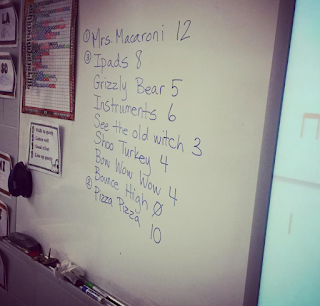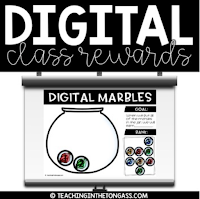See the old witch {A Halloween music composition activity}
"See the old witch" is a fun singing game that my first graders really enjoy. Here's the notation:
For the game, students sit in a circle, sitting down. One child is chosen to be “it” and has a penny in his/her hand. All other students close their eyes and put their hands behind their back. As they sing, the person who is “it” walks around the circle. At the end of the song, he/she drops the penny into the hands of whoever they are closest to. That child opens his/her eyes and chases “it” back to that child’s spot! The game continues with the chaser being “it.”
After students are comfortable with the song, I print out cards like the ones shown below onto cardstock, and have students as a whole group choose which cards go where (you can use magnetic tape like this to stick to your white board). We chant this as a B section--repeating it after saying it once, with the song being the A section. So if we were to perform ABA form, we'd sing the song, chant the B section, then sing the song again, like this:
Sung:
See the old witch/ Fell in a ditch/ Found a penny and/ Thought she was rich.
Spoken:
Found a penny/ Witch/ Found a penny/ Fell down!
Found a penny/ Witch/ Found a penny/ Fell down!
Sung:
See the old witch/ Fell in a ditch/ Found a penny and/ Thought she was rich.
In the next lesson, you could show the students the cards again and work with them as a full group, but then we split up into small groups and students get a chance to compose in small groups, getting 2 copies of each pattern. I give students 5-10 minutes to work with their groups, to choose 4 cards and place them on top of the beats, then read the cards with the group, adding a repeat sign at the end, so that they chant twice. I ask them to use at least one "witch" card, and tell them they can repeat a pattern. Here's a picture of one of my students working with the cards.
Students could perform their compositions in a rondo, with the song being the A section, and each group's composition being the alternate sections (A= we all sing, B= group 1 performs, A= we sing, C= group 2 performs, etc.) As students are performing, I find it helpful to play the steady beat on a hand drum or tubano. (Beware: many students will want to skip over the rest, so it's a great way to practice!)
Interested in using these cards? Download them for free HERE.
Looking for more Halloween activities? Check out this set, which could be used as sub plans, or as lesson plans during October.
Happy teaching!


















MENU SOCIAL LINKS